Spider Plant Care: How to Grow Chlorophytum Comosum
Spider Plants are one of the most popular houseplants in the world and one of the easiest indoor plants to care for, so they’re perfect for newbie plant enthusiasts. They’re adaptable, durable, and tolerate a wide range of conditions. Here are Spider Plant care and growing tips to keep yours healthy, looking good, and producing babies.
- Botanical Name: Chlorophytum comosum.
- Common Name: Spider Plant (also Airplane Plant, Ribbon Plant, and Spider Ivy)
This post may contain affiliate links, you can read our policies here.
Spider Plant Traits
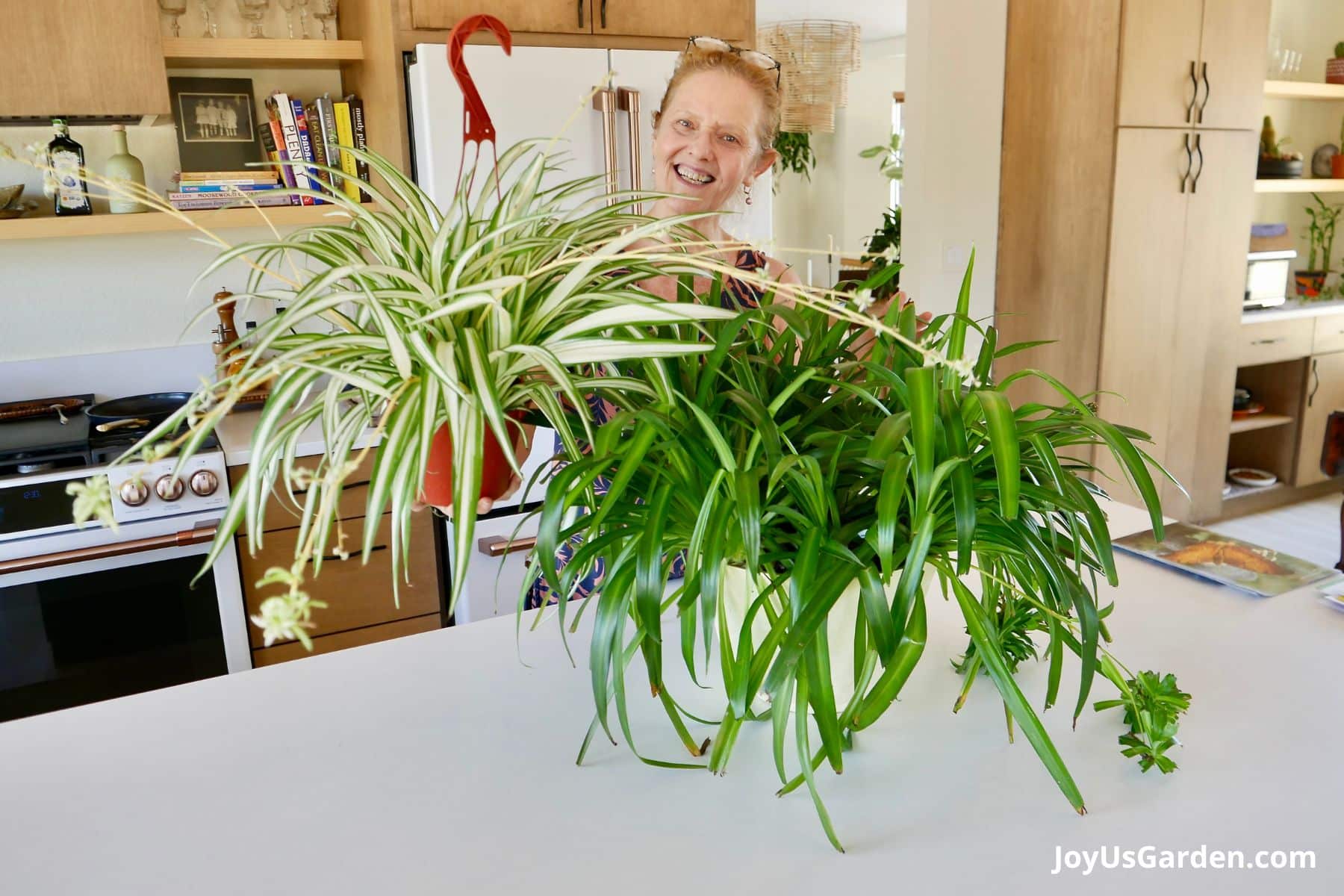
If you’re looking for a low-maintenance, beautiful houseplant that can thrive in various environments, you’ve come to the right place. Spider Plants are stunning with their cascading leaves and come in various leaf patterns and colors, mainly green, white, and chartreuse.
These hanging plants need room to show off their arching displays as they grow. Those long stems, with babies and flowers along them, spray out any way they want to. Spider Plants aren’t everyone’s cup of tea, but I love their wackiness and somewhat wild growth habit.
I grew them outdoors year-round when I lived in Santa Barbara, CA, in my side garden in pots in a bright, shaded spot. They’re as easy to care for outdoors as they are indoors.
I’ve since moved to Tucson, AZ, and now grow mine indoors. This is about Spider Plant care as houseplants. If you’re “houseplant challenged,” Spider Plants might be for you. Here’s what you need to know about caring for these trailing plants whose arching leaves look like large blades of grass.
Size
The leaves of these plants are long. A large plant would be approximately 36″ wide x 20″ high, not including the babies.
My larger one in a 12″ pot is 28″ wide x 22″ high. My smaller one in a 6″ pot is 19″ wide x 18″ high.
They’re commonly sold in 4″ pots and 6, 8, and 10″ hanging pots.
Growth Rate
Moderate to fast, depending on the growing conditions.
Uses
Spider Plants make excellent hanging plants, especially if they have stems with babies, as it really shows them off. Smaller ones are fine as tabletop plants. I’ve also seen them in living walls.
Spider Plant Care Tips
Light Requirements
Here’s where Spider Plants are most adaptable. They prefer nice bright light, near but not in a window unless it’s a north or east exposure.
Being in a south or west window will cause the plant to sunburn, but near is fine. Whatever the exposure, make sure they’re not touching hot or cold glass.
One of mine grows in the dining room, 3′ away from a west-facing window. The other grows in my office, hanging 2′ from a south-facing window.
Even though bright, indirect light is their sweet spot, they’ll tolerate lower light conditions. Just know that some or all will revert to solid green if you have a type with variegated foliage. And those leaves will eventually become paler, weaker, and limp if the light is too low.
They’ll do fine in strong artificial light. They probably won’t produce flowers and babies without natural light or in low-light conditions.
You may have to move your Spider Plant to a brighter spot in the winter months so it gets the light it needs. Here are more tips on winter houseplant care.

Watering
Spider Plants have low to average water needs. Water yours when it’s dry or almost dry. Be sure to let the water drain through the pot, and if in a saucer, don’t let it sit in water.
Depending on how warm and bright your house is, you’ll water every 10-21 days. I can’t tell you how often to water yours because many variables come into play. Here are a few: the pot size, the type of soil it’s planted in, the location where it’s growing, and your home’s environment.
Here in Tucson, the climate is warm, sunny, and dry. I water my Spider Plant in a 12″ pot about every fourteen days in the summer and every twenty-one days in the winter. Mine in a 6″ pot gets watered every seven days in summer and every 14 days in winter.
The thick rhizomatic roots of a Spider Plant store water. Don’t keep yours too wet, or it’ll succumb to root rot. It’s best if the bottom of the pot has one or more drainage holes. This allows the excess water to flow out.
Consider using distilled water if your tap water is high in salts (Spider Plants are sensitive to minerals). I have a tankless r/o water filtration system in the kitchen with a cartridge that puts the good minerals back in.
Interested in more on watering houseplants? Check out How to Water Indoor Plants.
Temperature
If your home is comfortable for you, it’ll be so for your indoor plants, too. Keep your Spider Plant from any cold drafts and away from direct air conditioning or heating vent blasts.
Mine grew in my Santa Barbara garden (zone 10) year-round, and I can tell you that they grow in warm and cooler temperatures outdoors.
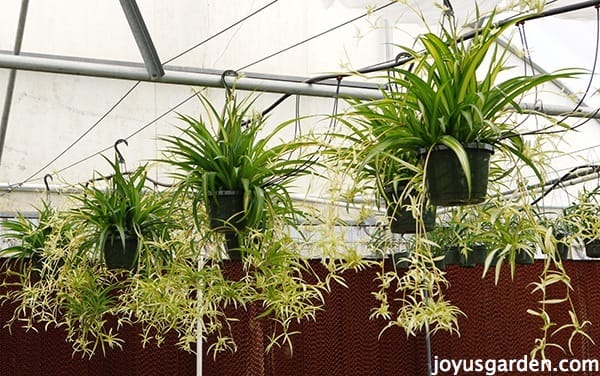
Humidity
These plants are native to subtropical and tropical regions. Even though they prefer humidity, they’re adaptable. They do fine in our homes, which tend to have dry air.
The humidity here in the desert can be as low as 10%. Because of this, my Spider Plants have brown tips; otherwise, they look great.
I have this humidity meter in my dining room close to the kitchen. It’s inexpensive but does the trick. I run my humidifiers when the humidity reads low, which is almost always in the Arizona desert!
Every month or two, I take mine outdoors, give the foliage a good shower, and leave it in the shade for a few hours. It also helps to keep the foliage clean.
If you think yours looks stressed due to lack of humidity, here are other things you can do. Fill the saucer your plant sits on with pebbles and water. Put it on the pebbles, but make sure the drain holes and/or the bottom of the pot aren’t submerged in water.
Misting your plant a few times a week will help, too. I like this mister because it’s smaller, easy to hold, and uses a nice amount of spray.
Fertilizing/Feeding
Spring and summer are the best times to feed your houseplants. Early fall is fine if you’re in a temperate climate like me.
We have a long growing season from mid-February through October in Tucson. I fertilize with Maxsea or Sea Grow, Grow Big, and Liquid Kelp seven times during the growing season. It’s how I feed all my tropical plants. I alternate using these granular and liquid fertilizers and don’t mix them.
Spider Plants aren’t fussy or needy; fertilizing too often will do more harm than good. Depending on your climate and growing zone, feeding two or three times a year may do it for your indoor plants.
Whatever houseplant food you choose, don’t use more than the recommended amount because minerals build up and can burn the plant’s roots. Spider Plants are sensitive to salt. Too much will show up as brown spots and/or brown tips on the leaves if you fertilize too often or use too high a ratio.
You want to avoid fertilizing any stressed houseplant, i.e., bone dry or soaking wet. I don’t fertilize houseplants in late fall and winter because it’s not their active growing season.
Every other spring, I give most of my houseplants a light application of worm compost with a light layer of compost. Easy does it – a 1/4 ” layer of each is enough for a 6″ houseplant. Read about my worm compost/compost feeding right here.
Repotting
Like fertilizing, spring, summer, and early fall are the best times to repot.
Spider Plants like being a bit potbound, so don’t rush to repot yours unless it’s stressed and/or outgrowing the pot. Growing slightly tight in their pots will help them produce babies.
When I repot Spider Plants (which isn’t too often), I generally go up one pot size for smaller plants and two sizes for large, mature plants. I last repotted one of mine five years ago, and it’s showing no signs of stress.
The tuberous roots are tough and grow tight together, so you may have to work a bit to get it out of the pot by pressing on the sides and/or running a knife around the perimeter.
Soil Mix
Spider Plants aren’t too fussy regarding the soil mix. Use good organic potting soil labeled for houseplants or indoor plants. It must drain well and provide adequate aeration.
The well-drained soil mix I use for mine is a blend of 1/3 potting soil, 1/3 coco coir, and 1/3 pumice. I toss in a couple of handfuls of a combo of worm compost and compost as I plant and top with a thin layer.
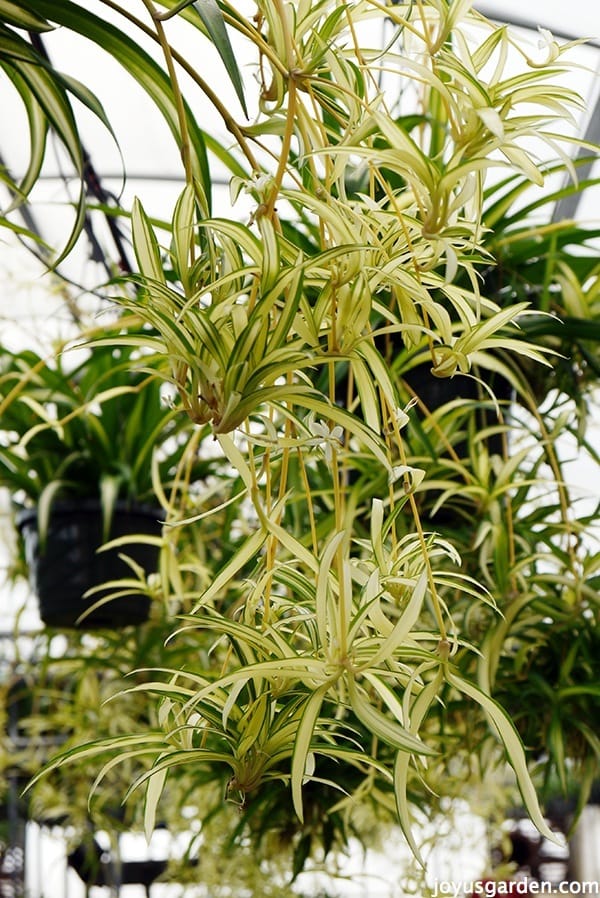
Pruning
This plant grows thick with foliage. I prune mine every couple of months to remove any yellowish undergrowth and bent and/or dead leaves.
And, of course, to remove the stems with the baby Spider Plants for propagating! Just make sure your pruning tools are sharp before you do any pruning.
Propagation
Spider Plant babies are very easy to propagate. Simply cut the stem and remove the decent-sized baby. I wait until they’re at least 2-3″ in diameter with root nubs showing at the bottom.
Often, there will be multiple babies on the stem, so you’ll get more than one new Spider Plant! The roots start as tiny brown nubs on the bottom of the spiderettes and turn whitish as they grow and elongate.
The most popular way of propagating is in water. Put them in a jar or vase with water, and the roots will grow really fast. You don’t want water covering the foliage, just the roots.
Change the water every 7-14 days so it stays fresh. You can plant them after 7-10 days or leave them in water much longer. I once left one in water for seven months, and it was fine.
You can also put them in a light soil mix to root. Keep it evenly moist while rooting. Whether you’re propagating them in water or a mix, keeping them in bright light but out of direct sun is best.
Another way to propagate them is by division. This can be challenging if the plant is older because those root balls are incredibly thick, dense, and fleshy. You could lose a portion of the plant and/or root ball in the process.

Pests
Mine have never been infested with any, but I’ve seen them with mealybugs and scale. I’ve heard they can also get aphids and spider mites.
Identify these pests and treat your plant accordingly to get rid of them. Pests can travel from plant to plant fast and multiply practically overnight, so ensure you get them under control as soon as you spot them.
Many people use neem oil to control these pests. I’ve been using this insecticidal super soap for two years with success.
Spider Plant Flowers
Oh yes, they do flower! They’re not particularly showy, nor are they fragrant, and are small and whitish. The star-shaped flowers appear as the plant ages.
Pet Safety
Are Spider Plants toxic to cats and dogs? Wave the flags! According to the ASPCA website, this one is deemed non-toxic.
Just be aware that Spider Plant leaves are like crunchy grass. Fluffy or Fido might love munching away, making them sick. My kitty Tazzy occasionally chews on the ends of mine, so that’s another reason for pruning!
Here are some of our houseplant guides you may find helpful: 6 Low Maintenance Plants For Travelers, 11 Pet Friendly Houseplants, Tips For Buying Houseplants, Best Low Light Indoor Plants, Easy Care Office Plants, 7 Easy Care Floor Plants, 7 Easy Tabletop & Hanging Plants
Spider Plant Care Video Guide
Spider Plant Care FAQS
It grows the fastest in moderate to high light exposure. A bright spot shows off its arching nature and encourages flowering and the production of those small plantlets or babies a Spider Plant is known for.
Spider Plants love bright natural light, but too much direct sun will cause burn.
They’ll survive in lower light but won’t grow much. This can also cause the foliage to turn pale and weak. Like many indoor plants, a location with indirect sunlight is their sweet spot.
No! I think they’re one of the toughest indoor plants around.
Spider Plants can live a long time, well over 30 years. I knew a woman who had inherited her grandmother’s 40-year old+ Spider Plant. Nice to have a living memory of a beloved family member!
No, they don’t. If they have many spiderettes attached, a hanging basket gives them more room to do their thing. They look better as a hanging plant because this shows off the arching leaves and sprays of babies.
I would choose another indoor plant if you want one to grow upright. Spider Plants have long, arching leaves that look best displayed as is. Besides, they rarely get above 20-24″ tall.
You can. Just know that if you leave too many babies on for too long and they get too mature, they’ll drain the energy out of the mother.
It depends on many factors, so I can’t tell you. Yours might need to be watered more or less frequently than mine, depending on the pot size, the type of soil it’s planted in, the location where it’s growing, and your home’s environment. Keeping them on the dry side is better watering when the soil is almost dry. They have thick, fleshy roots that store water, so soggy soil is something they don’t like!
Again, it depends on where you live. I’m in a climate with mild, sunny winters and water mine in a 12″ pot about every 21 days. I water my 6″ Spider Plant every 14 days.
Yes, I do. A broken leaf will never grow back. Besides, Spider Plant foliage grows densely, so the plant will put out more leaves in no time.
Most of our homes have low humidity at some time during the year. Brown leaf tips are most commonly caused by dry air.
I don’t because I don’t like the look. You can if you’d like, but it will be an ongoing task!
Yellow leaves on plants are commonly due to too much water, too little water, too much fertilizer, not enough light, or tap water too high in minerals. My Spider Plant is big and very full. Some low under leaves turn yellowish due to lack of light because the upper leaves crowd and shade them out.
In no time at all! The roots are already poking out on the bottoms of the baby plants. The roots are well along after 7-14 days in water.
When rooting in water, be sure to keep the water at a steady level. You don’t want it covering the foliage, just the roots. Change the water every 7-14 days so it stays fresh. If in soil, keep it evenly moist. It’s best to keep them in bright light but out of direct sun.
In conclusion, Spider Plants are resilient, easy-care houseplants that are a wonderful addition to any home or office space. By following these care tips mentioned above, you can ensure that yours thrives and flourishes for years. Remember to provide bright, indirect sunlight for it to look its best and water when dry or almost dry.
You’ll be able to enjoy the beauty of these wild and wacky green beauties for years to come!
Happy gardening!


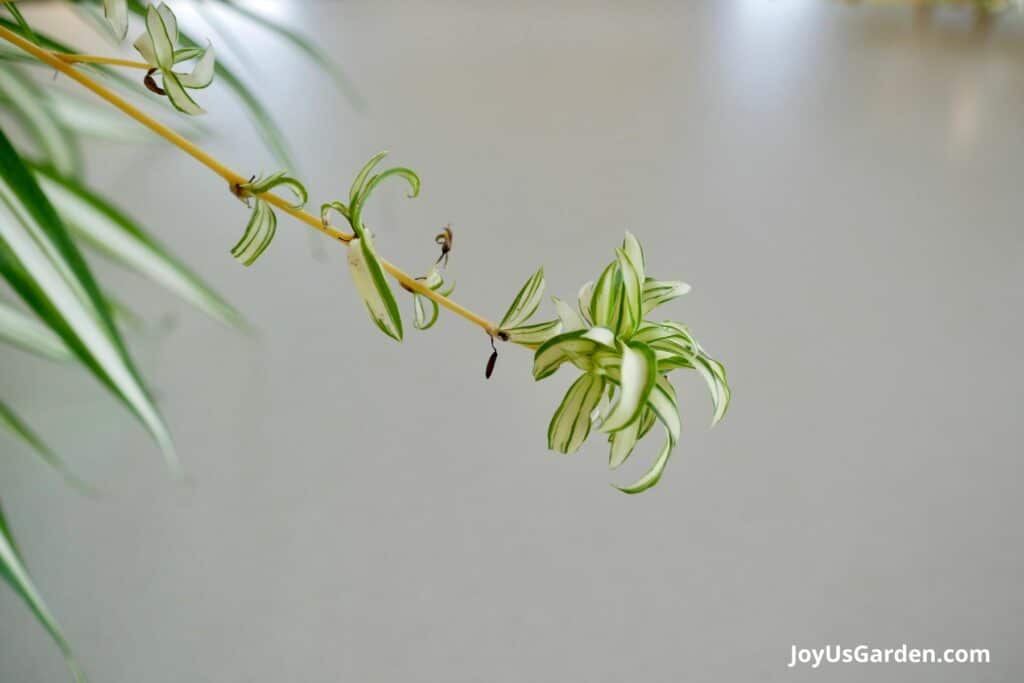
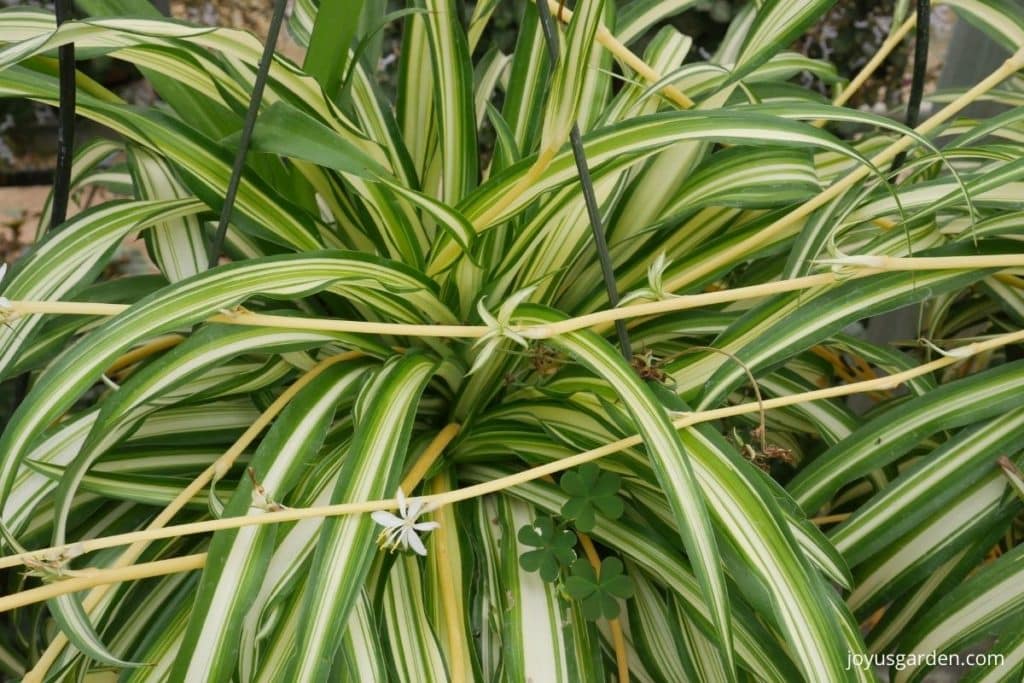

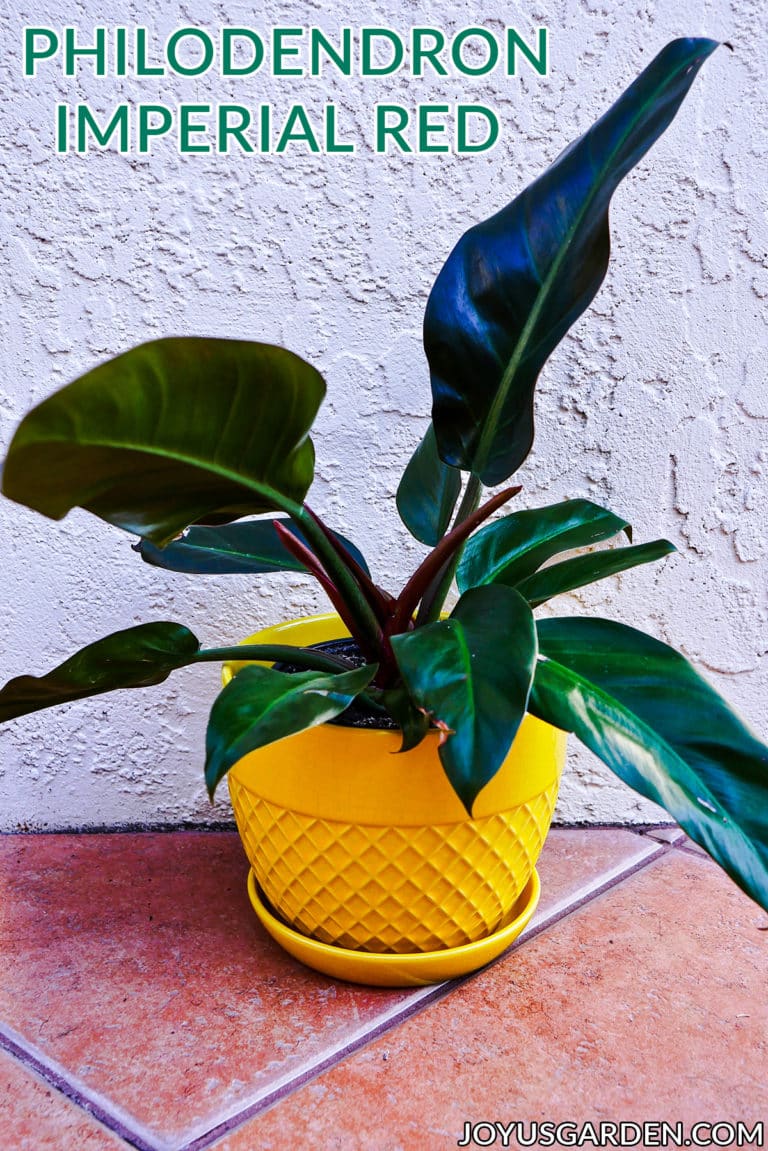
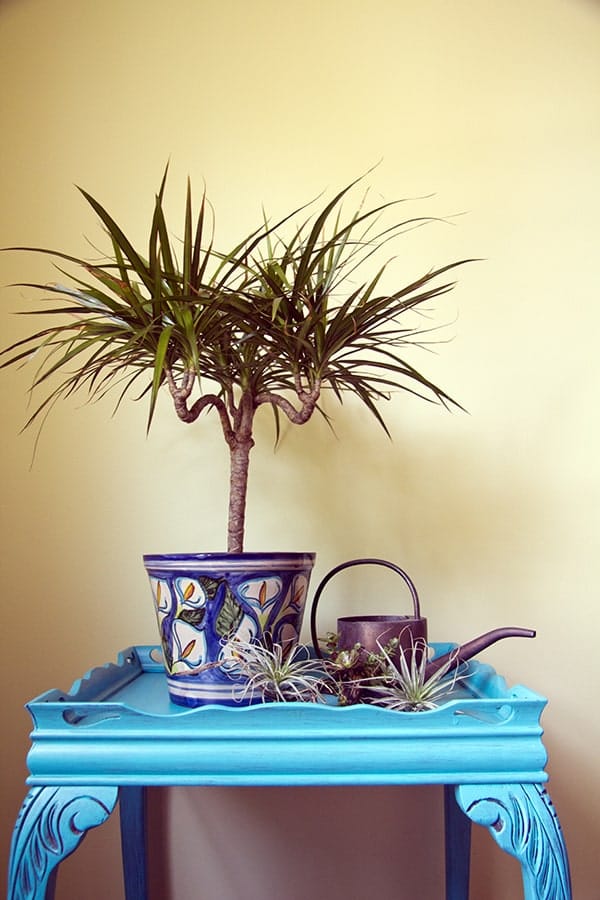
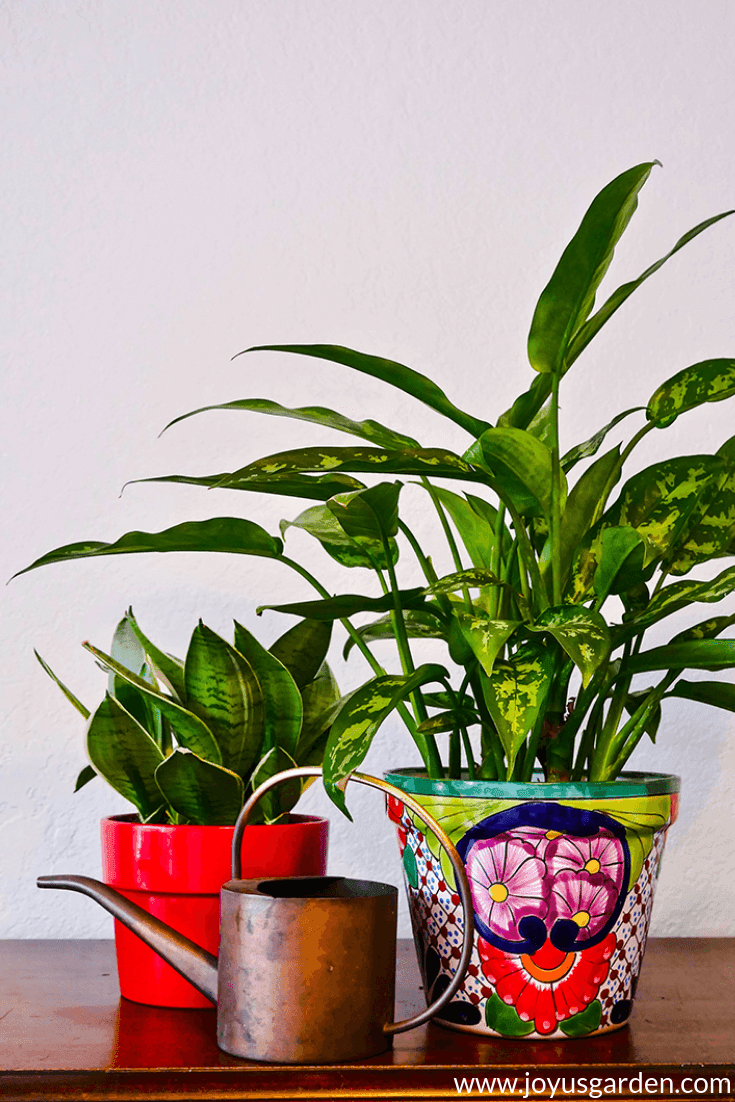
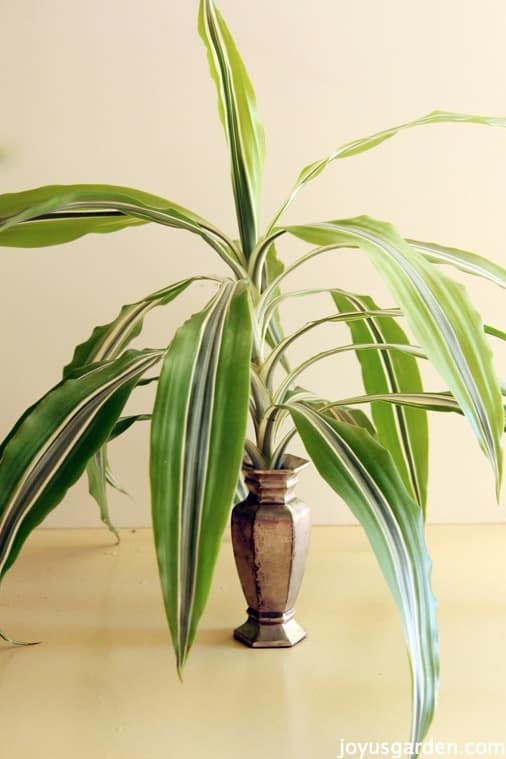
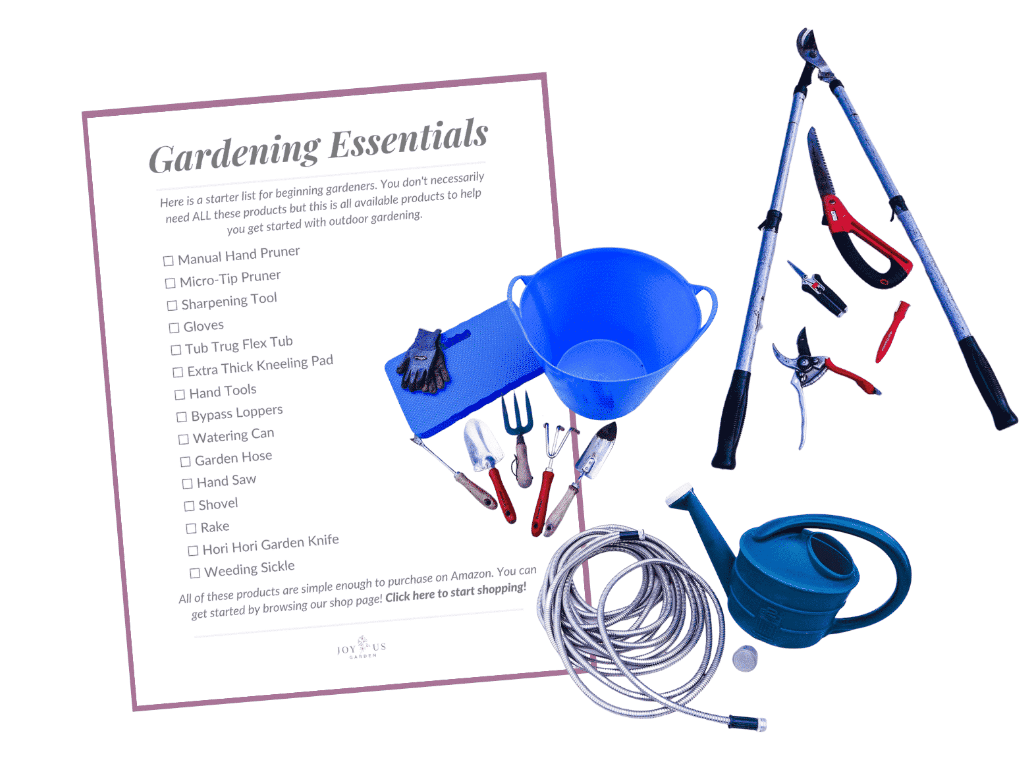
I would like to know I live in Florida in the middle of the state and I would like to know if I can leave my spider plant outside in the winter time if it does get cold I could cover it up because I would like to put it in a birdbath well drained
Hi Jack – I’m not sure how cold you actually get by Spider Plants are hardy in USDA zones 9-11. I lived in Santa Barbara,CA where the average winter lows were around 40 degrees F & my Spider Plants did fine in my garden. They can’t take a freeze. Hope that helps, Nell
my spider plant babies keep getting brown and dying on me, i have it in the south window because my house is facing the south.
Hi Nichole – You could be over watering. Or, if the plant is potbound, they could be too dry if the plant is getting a lot of sun. Nell
My spider plant on the stem has brown looking bugs an it has a sticky white residue on it what can I do for it?
Hi Wanda – It sounds like scale; spider plants are susceptible to them. Here’s a post & video I did which will help you out: https://www.joyusgarden.com/scale-thrips-how-to-control-them/ Nell
Loved the video! Am I to understand that spider plants should be planted individually? I was recently given several baby plants that had been living in water. I planted them in an 8″ hanging planter but not too closely together. They are growing beautifully but I haven’t gotten any babies yet. Should I try to separate them and plant them separately or is it too late?
Hi Miriam – I plant them individually because they grow so fast & have thick roots. You’ll eventually need to transplant them because they’ll crowd out an 8″ pot. Plus, they get heavy as those roots grow! I’ve found they produce babies readily when they’re slightly pot bound. Nell
im struggling with my spider plant..
I got it because its supposed to be easy.. or so I thought… I keep getting yellow/brown tips.
I have it hung in a macrame hanger it gets some pretty good bright indirect light from an east and west window, I just recently started watering with distilled water but the brown/yellow leaves keep popping back!.. im also watering when the top 2 inches are dry….what am I doing wrong!
Hi Yessica – I’ve since moved to the Arizona desert where my Spider Plants now grows outdoor in the shade. It gets brown tips here because of the dry air, especially in summer. Yellow leaves can be caused by a few things but the 2 most common are: too little light & salts in the water. Even though you’re using distilled water now, if salts are the cause, they’ve built up in the soil & it’ll take them a while to all flush out. Nell
Great info here…. thank you!!
Mary Lou
Thank you Mary Lou … & you’re welcome! Nell
To Jack Mainville in Florida. I live in south Louisiana and have been growing spider plants outside in the ground for decades and they have endured our winters just fine. They’ve spread like ground cover. So they have lived through 20 degree winters.
Hi James – Good to know. I now live in Tucson, AZ & mine has survived temps to 27F. I took it inside because of our extreme summer heat. Nell